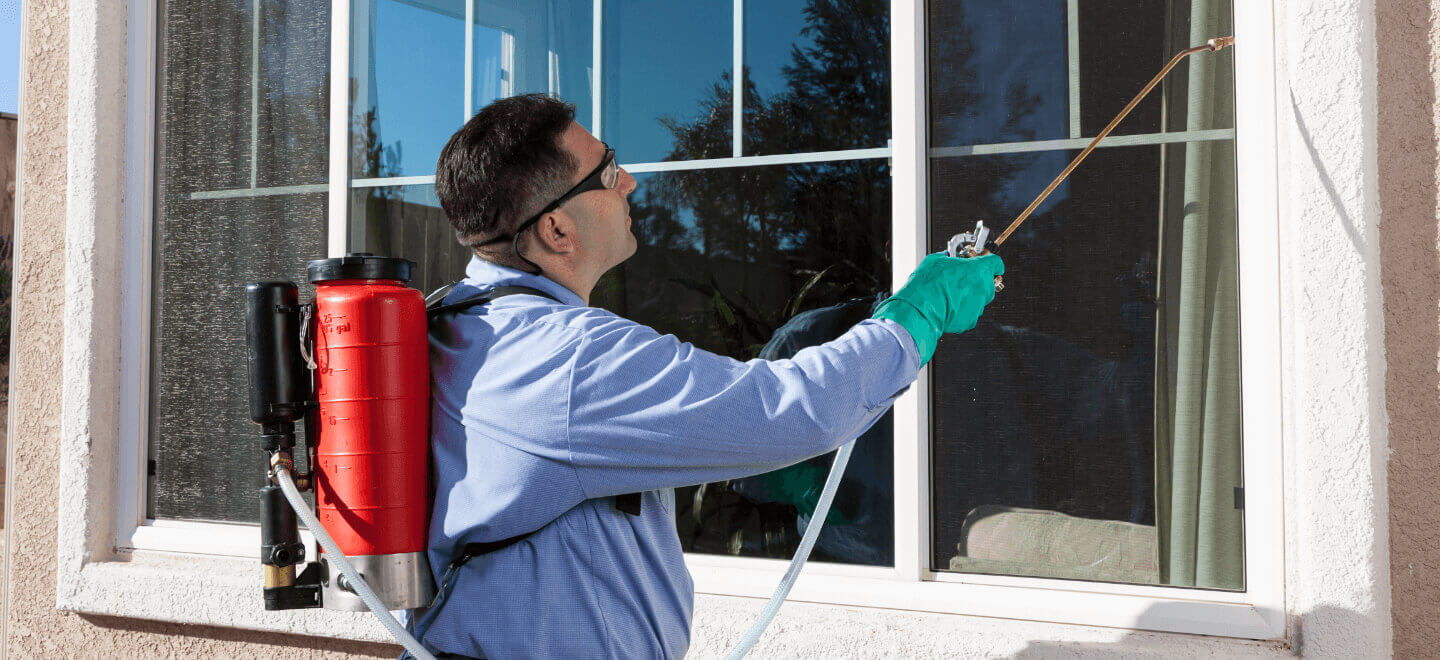Relied On A1 Exterminator Charlotte NC - Comprehensive Pest Solutions
Relied On A1 Exterminator Charlotte NC - Comprehensive Pest Solutions
Blog Article
Bed Bug Therapy Malfunction: Contrasting Chemical Vs. Non-Chemical Solutions
In the world of parasite control, especially when handling the persistent issue of bed insects, the choice in between chemical and non-chemical therapy services can be a pivotal one. Both approaches offer unique benefits and disadvantages, influencing aspects such as efficiency, security factors to consider, and total expense. By taking a look at the nuanced details of each technique, a clearer understanding of which path to go after in attending to a bed bug infestation can be achieved.
Efficiency of Chemical Therapies
Chemical therapies for bed bug infestations have been widely acknowledged for their fast and potent efficiency in eradicating these pests. When considering the effectiveness of chemical therapies, it is essential to understand that they can give a thorough and fast remedy to a bed bug trouble.
Additionally, chemical therapies have the advantage of offering recurring effects, suggesting that they can remain to remove bed insects even after the initial application. This recurring activity is especially useful in combating any possible re-infestations. Additionally, the quick action of chemical therapies can bring relief to people facing extreme bed bug infestations, enabling them to restore control of their living spaces promptly.
Security Worry About Chemical Solutions
One vital element that requires mindful consideration when utilizing chemical remedies for bed insect treatment is guaranteeing the security of occupants and the setting. Direct exposure to particular chemicals used in bed insect treatments can lead to respiratory system issues, skin inflammation, or various other unfavorable reactions, particularly in individuals with pre-existing problems or sensitivities.
Additionally, the environmental impact of chemical services is one more considerable factor to consider. Some chemicals utilized in bed insect treatments might be dangerous to valuable insects, wild animals, and communities if they seep right into the dirt or water systems. It is vital to use chemical therapies carefully, following safety standards, and taking into consideration much less harmful choices to reduce these threats and ensure the reliable and secure administration of bed pest infestations.
Benefits of Non-Chemical Strategies
Thinking about the possible safety and security issues and ecological impact related to chemical services for bed pest treatment, exploring non-chemical strategies offers an encouraging alternative with a number of unique advantages. Non-chemical methods use a much safer option for families, particularly those with pet dogs, individuals, or youngsters conscious rough chemicals. These strategies eliminate the threats of direct exposure to harmful materials, reducing the capacity for damaging health and wellness impacts. Additionally, non-chemical therapies are eco-friendly, as they do not add to air or water pollution, making them a sustainable choice for pest control.
Furthermore, non-chemical solutions can be reliable in targeting bed insects, including hard-to-reach areas where chemical treatments might not permeate - A1 bed bug exterminator charlotte. Methods such as warmth therapy, vacuuming, steam cleansing, and cushion local exterminators coverings offer extensive removal without address the use of dangerous chemicals.
Limitations of Non-Chemical Treatments

Additionally, non-chemical treatments usually need multiple applications to attain successful obliteration. This can be lengthy and might not constantly guarantee full removal of all bed pests and their eggs, particularly in hard-to-reach or surprise places.
In addition, the success of non-chemical treatments heavily counts on correct implementation and thoroughness, which can be challenging for individuals without specialist experience. Inadequate application of non-chemical methods might cause incomplete removal, causing relentless infestations and the requirement for added treatments.
Therefore, while non-chemical therapies have their advantages, it is important to acknowledge these restrictions and consider them when determining the most effective technique for taking care of bed bug infestations.
Price Contrast: Chemical Vs. Non-Chemical Options
Offered the restrictions related to non-chemical treatments, a crucial element to assess in the context of bed insect monitoring is the price contrast in between chemical and non-chemical choices. Chemical treatments normally include the application of insecticides by professionals, which can range from $250 to $900 per area, depending upon the seriousness of the invasion and the dimension of the location to be dealt with. In contrast, non-chemical therapies like heat treatment or vapor can be much more costly, with costs varying from $1,000 to $6,000 for a whole home. While the preliminary expense of chemical treatments may appear reduced, multiple therapies might be needed to fully eradicate the invasion, possibly increasing the total price. On the various other hand, non-chemical choices may supply a much more sustainable and environmentally friendly service, he said although they can be cost-prohibitive for some individuals. Ultimately, when considering the price of bed insect therapy choices, it is essential to weigh the ahead of time expenses versus the efficiency and long-term sustainability of the picked technique.
Conclusion

Thinking about the potential safety and security worries and environmental impact connected with chemical services for bed pest therapy, discovering non-chemical strategies offers an appealing alternative with numerous distinctive advantages.Provided the restrictions linked with non-chemical therapies, a crucial aspect to examine in the context of bed pest management is the cost comparison in between chemical and non-chemical alternatives. In comparison, non-chemical treatments like heat treatment or heavy steam can be a lot more pricey, with costs ranging from $1,000 to $6,000 for an entire home. While the preliminary price of chemical treatments may appear reduced, numerous treatments might be called for to completely get rid of the invasion, potentially raising the general expense.In conclusion, when contrasting chemical and non-chemical bed pest therapy alternatives, it is vital to think about performance, safety and security, advantages, limitations, and cost.
Report this page